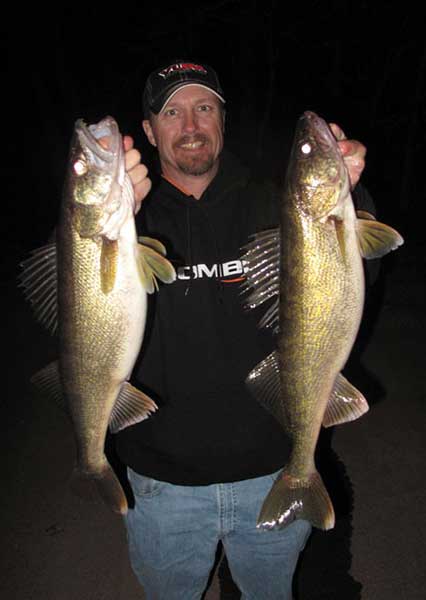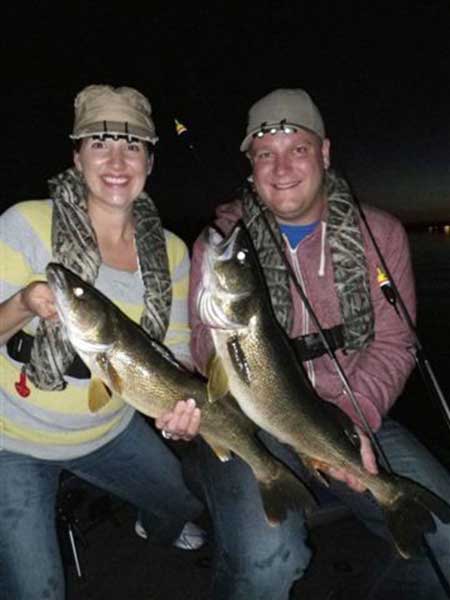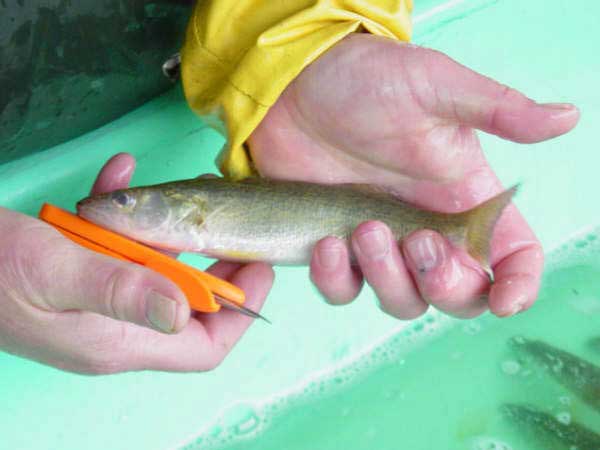- Details
(Provided by PRADCO)
 Fish shallow at night for ‘eyes.When winter fails to take its exit cue, the underwater world slows down. Migrations are postponed and late winter patterns linger, creating spectacular opportunities for the walleye-season opener.
Fish shallow at night for ‘eyes.When winter fails to take its exit cue, the underwater world slows down. Migrations are postponed and late winter patterns linger, creating spectacular opportunities for the walleye-season opener.
Mike Christensen has been guiding walleye fishermen on opening day in Minnesota for 17 years, and says there should be some great shallow water walleye fishing on tap as soon as the season opens May 11.
- Details
(Provided by Indiana DNR)
Largemouth bass anglers who are concerned that walleyes stocked into northeast Indiana lakes could be damaging bass fishing need not worry.
Data obtained by DNR biologists from bass tournaments at four lakes where walleyes are routinely stocked indicate there is little evidence to suggest bass fishing has been harmed.
At Crooked Lake and Lake George in Steuben County, two of the area’s best walleye lakes, numbers of 14-inch and larger bass caught by tournament anglers increased over the past 10 years.
- Details
(Provided by PRADCO Fishing)
 Try slip floats at night for walleyes.Walleyes have something in common with bats and owls – they’re more suited to nighttime activities than the glare of the noonday sun. They’d rather live in Moonglade than the Land of the Eternal Sunshine. Under certain conditions, such as following cold fronts, calm days or during unusually hot weather, walleyes are driven to the dark side by the bazillions.
Try slip floats at night for walleyes.Walleyes have something in common with bats and owls – they’re more suited to nighttime activities than the glare of the noonday sun. They’d rather live in Moonglade than the Land of the Eternal Sunshine. Under certain conditions, such as following cold fronts, calm days or during unusually hot weather, walleyes are driven to the dark side by the bazillions.
Spring through early summer, a slip-float rig is the way to go at night, and few anglers know more about it than Wisconsin walleye guide Greg Bohn. Bohn is the author of several books and articles on the subject, and over the years designed plenty of rods, floats, leaders, rigs and jigs for slip-bobber tactics.
“The Thill Splash Brite really simplified slip-bobber fishing at night,” Bohn said. “It has electrodes that use the lake water to complete the circuit. When it hits the water, the light comes on. Pull it out of the water, and it’s off.”
Bohn says night fishing tends to be good whenever conditions are bad for daytime fishing.
- Details
(Provided by Indiana DNR)
 Stocking larger fish in smaller numbers is paying off. Sylvan, Winona walleyes are plentifulEven though the DNR stocked fewer walleyes in Sylvan and Winona lakes during the past three years, studies show that’s had no effect on the number of walleyes that survived.
Stocking larger fish in smaller numbers is paying off. Sylvan, Winona walleyes are plentifulEven though the DNR stocked fewer walleyes in Sylvan and Winona lakes during the past three years, studies show that’s had no effect on the number of walleyes that survived.
That means anglers will find plenty of walleyes to catch in those northeastern Indiana lakes. It also appears to mean factors other than stocking rates play more important roles in determining walleye survival.
From 2001 through 2009, DNR fisheries biologists stocked fingerling walleyes annually at the rate of 20 per acre at Sylvan in Noble County and Winona in Kosciusko County. That rate was cut to 15 per acre from 2010 through 2012. Survival rates one year later were generally greater at the lower stocking rate than at the higher one.





